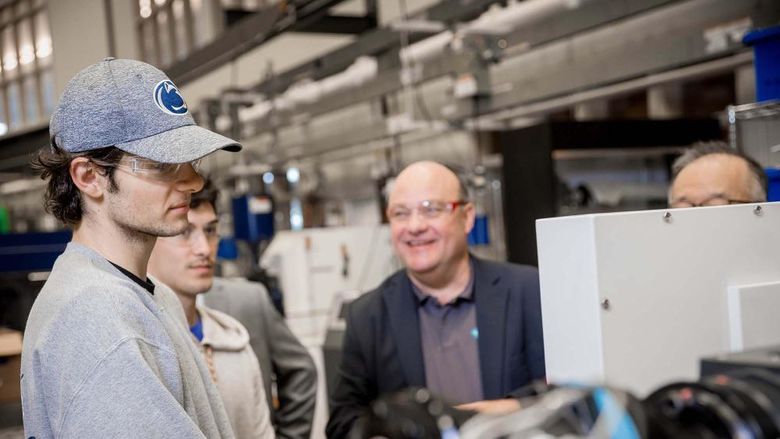Seven of eight key economic indicators that often predict shifts in the Erie region’s economy showed growth in the third quarter of 2013. The one measure that decreased – the average time Pennsylvania manufacturing workers spent on the job each week – could in itself be a good sign, said Jim Kurre, director of the Economic Research Institute of Erie and an associate professor of economics at Penn State Erie, The Behrend College.
“During an upturn, companies cut down on overtime,” he said. “They hire instead, and that’s better.”
Local workers have won back 10 of every 13 jobs lost in the recession, Kurre said. Even the manufacturing sector has shown growth, according to the Erie Leading Index, a quarterly snapshot of the region’s economy. That might soften the blow when GE Transportation – the largest employer in Erie County – eliminates nearly 1,000 positions at its Lawrence Park facility.
Still, employment in the Erie region was flat in the third quarter, according to Kurre. Political gridlock in Washington, D.C., and uncertainty about the costs of health-care reform aren’t helping, he said.
“Businesses are concerned about Obamacare,” said Kurre, who posts local economic data, including the Erie Leading Index, at ERIEdata.org. “And any time businesses are uncertain, they’re less likely to hire.”
Other components of the Erie Leading Index continue to show growth. The number of building permits issued for new U.S. homes rose sharply in September, Kurre said. The U.S. interest rate spread – the rate banks charge for private loans, compared to what they pay on deposits – increased in each of the last five months.
Those gains pushed the Erie Leading Index to a new high. The job numbers are still lagging, however.
“We’re almost back to where we want to be,” Kurre said. “It’s just taking too darn long.”
Robb Frederick
Director of Strategic Communications, Penn State Behrend





